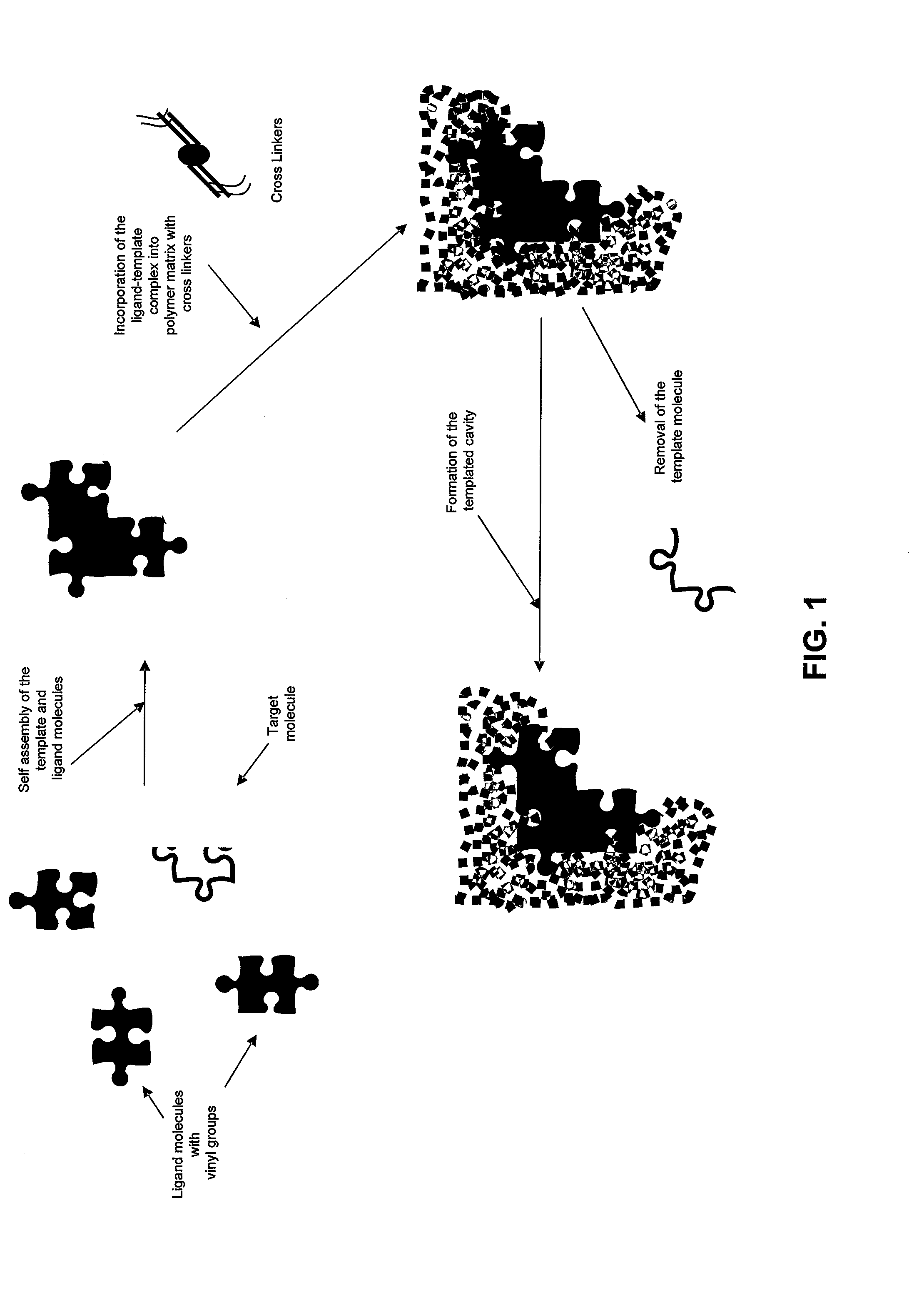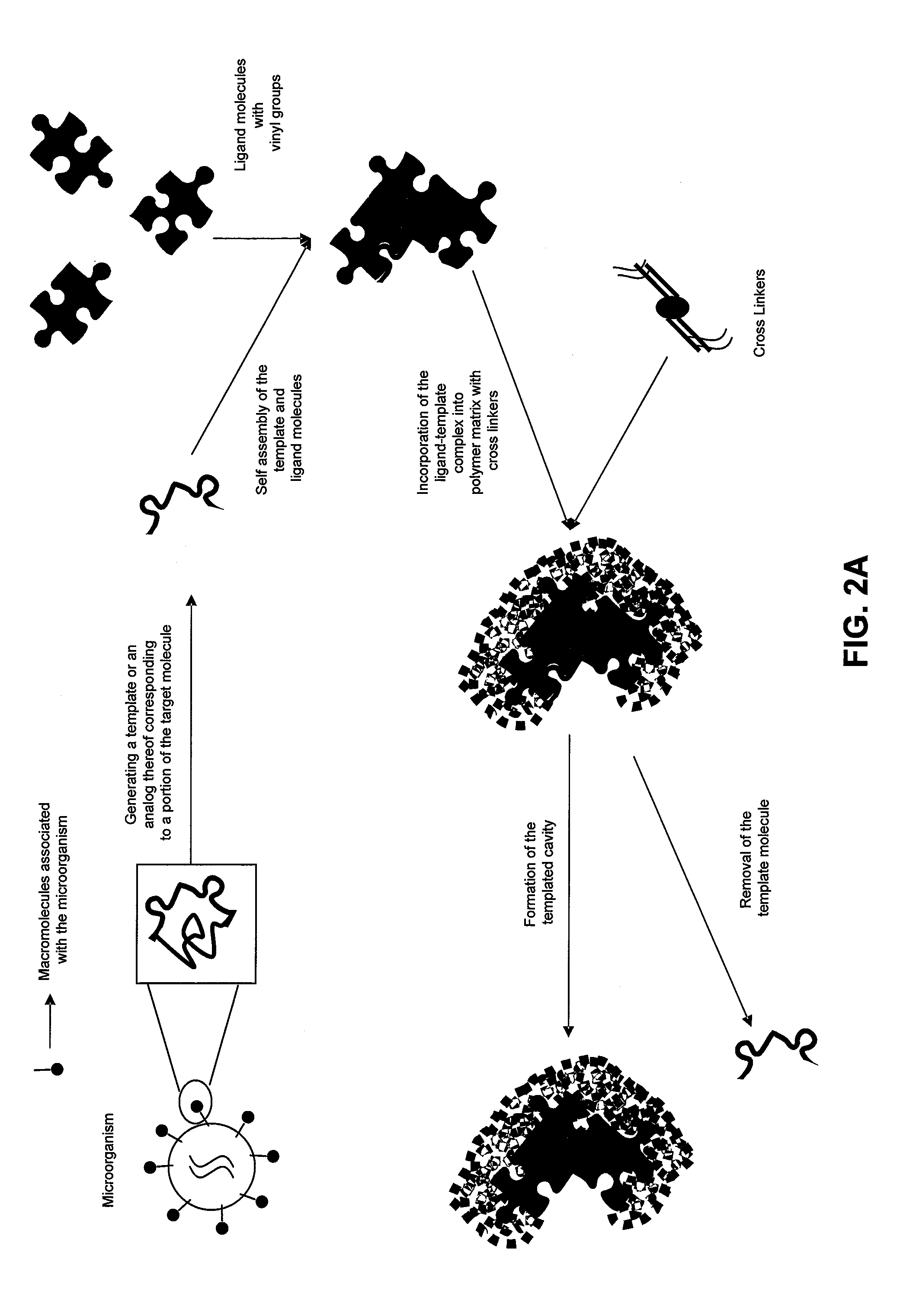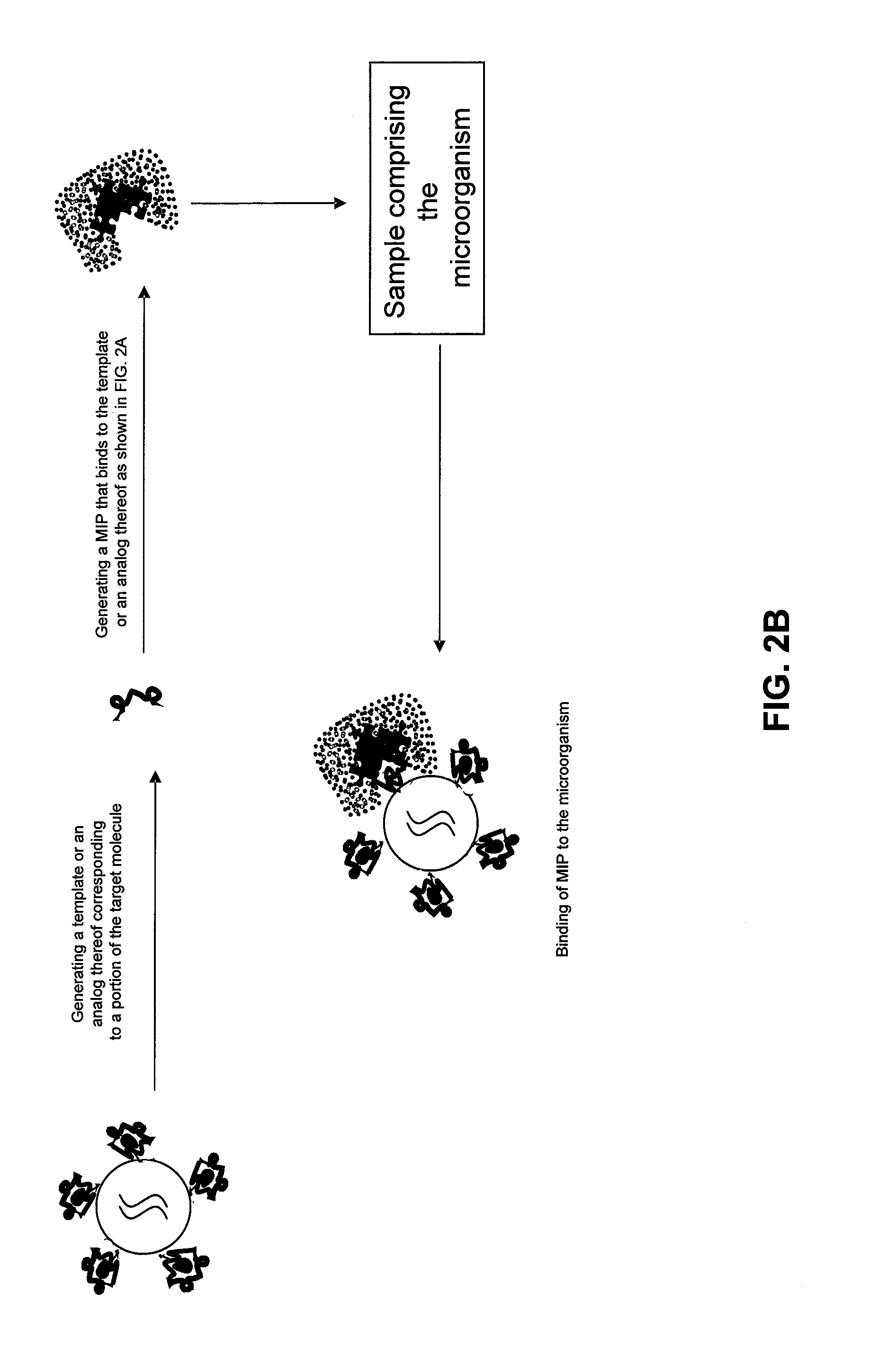Molecularly imprinted polymers for detecting microorganisms
a technology of molecular imprinting and microorganisms, which is applied in the field of molecular imprinting polymers (mips), can solve the problems of limited success of molecular imprinting, limited application of molecular imprinting to the binding of larger molecules, and inability to detect or identify microorganisms
- Summary
- Abstract
- Description
- Claims
- Application Information
AI Technical Summary
Problems solved by technology
Method used
Image
Examples
example 1
[0110]As illustrated in FIG. 1, MIPs of the invention described herein can be manufactured by generating a template of a portion of the target molecule, and polymerizing functional monomers in the presence of such template. The functional monomers can bind to active sites on the template molecule and then polymerize in the presence of excess of cross-linking agents. While the polymerization can be effected in the presence of the template molecules, subsequent removal of the latter can leave behind cavities that have the shape and an arrangement of the functional group that is complementary to that of the template molecules. Thus the resulting MIP can exhibit the ability to rebind the template molecule tightly and selectivity.
example 2
[0111]FIGS. 2A and 2B illustrate a schematic representation of detecting a bacteria utilizing MIPs of the present invention. Upon identification of a unique macromolecule associated with the bacteria, a template of a portion of the macromolecule comprising one or more epitopes, can be generated. Functional monomers can be polymerized in the presence of the template molecule such that the monomers bind to active sites on the template molecule, which can further be polymerized in the presence of excess of cross-linking agents. Subsequent removal of the template molecule (FIG. 2A) can leave behind cavities that have the shape and an arrangement of the functional group that is complimentary to that of the portion of the macromolecule that is unique to the microorganism. The resulting imprinted polymer can thus exhibit the ability to bind the portion of the macromolecule associated with the microorganism tightly and selectivity, and identify the microorganism (FIG. 2B).
example 3
[0112]Detection of Methicillin-Resistant S. aureus (MRSA) utilizing MIPs
[0113]One embodiment of the invention comprises detecting MRSA utilizing MIPS generated to bind to PBP2A. Particularly, MIPs can be generated utilizing epitopes amino acid sequences corresponding to various within PBP2A as template molecules. For example, template molecules can be designed comprising the amino acid sequences (please see table 1 below) MKKIKIVPLILIVVVVGFGIYFYAS (SEQ ID NO:1); KKIKIVPL (SEQ ID NO:2); KIKIVPLI (SEQ ID NO:3); QNWVQDDTF (SEQ ID NO:4); KEYKGYKDDAVIGK (SEQ ID NO:5); EYKGYKDD (SEQ ID NO:6); YKGYKDDA (SEQ ID NO:7); DKKEPLLNKFQITTS (SEQ ID NO:8); KEPLLNKF (SEQ ID NO:9); EPLLNKFQ (SEQ ID NO:10); PLLNKFQI (SEQ ID NO:11); GYNVTRYEVVN (SEQ ID NO:12); GVGEDIPSDYPFYNAQILD (SEQ ID NO:13); DYPFYNAQ (SEQ ID NO: 14) and / or fragments thereof, which are unique to provide a surface imprint with specificity for PBP2A. MIPs generated utilizing such amino acid sequences as templates can be used to detect...
PUM
| Property | Measurement | Unit |
|---|---|---|
| fluorescence | aaaaa | aaaaa |
| affinity | aaaaa | aaaaa |
| strength | aaaaa | aaaaa |
Abstract
Description
Claims
Application Information
 Login to View More
Login to View More - R&D
- Intellectual Property
- Life Sciences
- Materials
- Tech Scout
- Unparalleled Data Quality
- Higher Quality Content
- 60% Fewer Hallucinations
Browse by: Latest US Patents, China's latest patents, Technical Efficacy Thesaurus, Application Domain, Technology Topic, Popular Technical Reports.
© 2025 PatSnap. All rights reserved.Legal|Privacy policy|Modern Slavery Act Transparency Statement|Sitemap|About US| Contact US: help@patsnap.com



